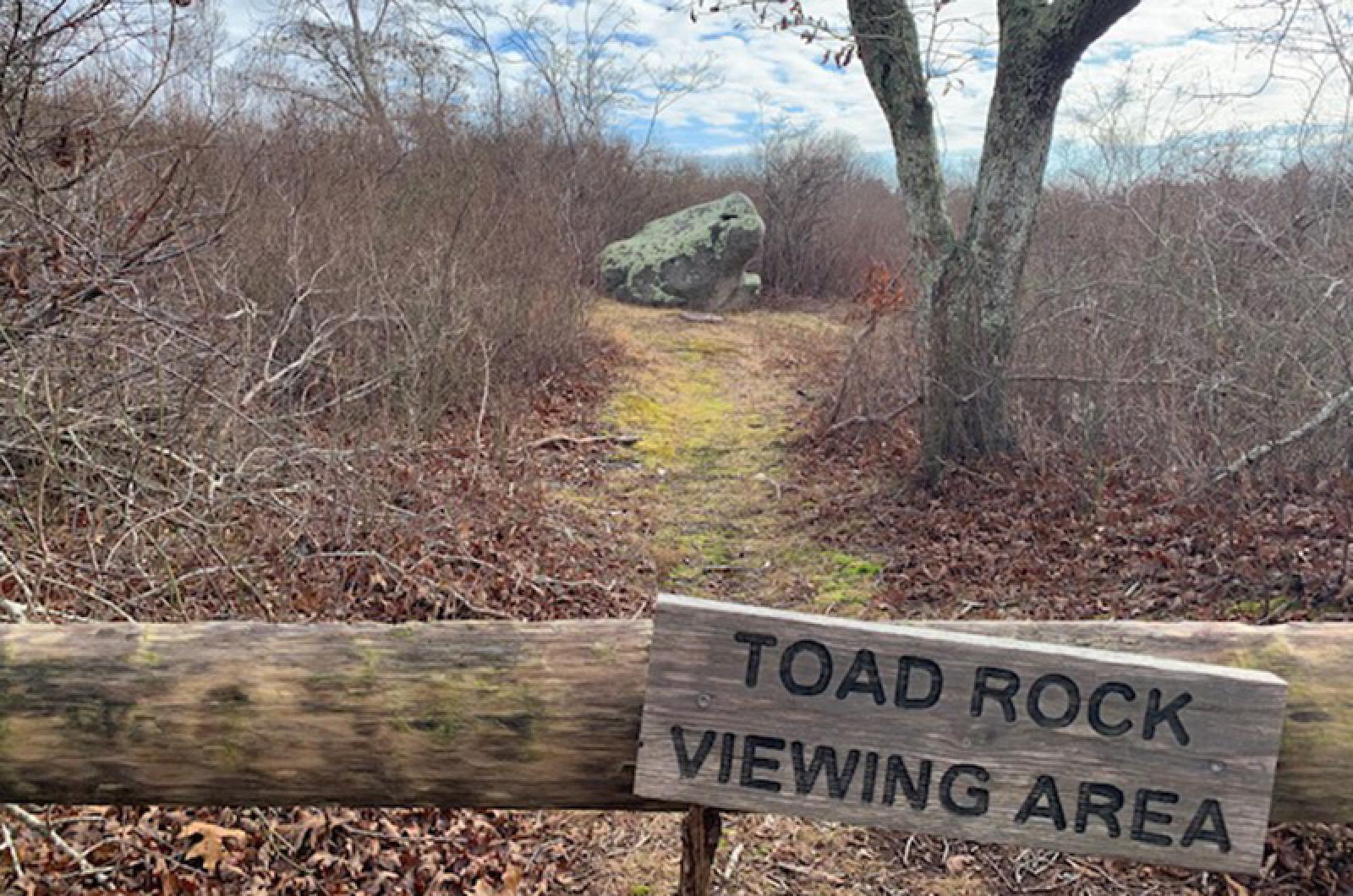Mononymous French author Colette kept good company, sharing this opinion of her favorite associates: “Our perfect companions never have fewer than four feet.”
While she likely referred to the typical four-footed friends, cats and dogs, this adage could describe many other creatures, even ones that might not come to mind.
In the case of a local tale, a toad was the beloved quadruped pal of a historical figure. Moshup, described by the Wampanoag Tribe as a “benevolent being of gigantic frame and supernatural power” had a tetrapod buddy by his side who remains with us today.
Moshup’s toad can be found in Aquinnah, resting at a place of honor at what is now called Toad Rock Preserve. During a visit to this MV Land Bank property, I was able to find the toad, now a batrachian glacial erratic, or, more simply, a giant toad-shaped rock.
According to tribal history, Moshup “turned into stone” his giant pet toad before “disappearing from Aquinnah.” The large rock, which really does look like an enormous toad, became a meeting place and even a post office of sorts, since tribal members were reputed to have placed notes for each other at the rock, possibly in the eye of the toad.
It is not surprising that the toad’s spot was popular then as it is now. Toad Rock Preserve is a beautiful area with views at Surveyors Hill to Squibnocket Pond and Noman’s. Nor is it surprising that the toad served as a symbol to the Wampanoag and to many others throughout history that have respected, feared,and honored this animal.
Toads have been imbued with powerful magic, health and horror. Author Jack Tresidder in his book, The Complete Dictionary of Symbols, describes toads (and frogs) as “a loathsome familiar of witches, suggestive of death and the torments of the damned — a demonic symbolism … based perhaps on the toad’s noxious secretions.”
Pliny the Elder saw toads as bit more benign, though retaining some curious powers — “a toad’s presence will silence a room full of people; a small bone from a toad’s right side will keep water from boiling; a bone from the left side will repel the attack of dogs.”
Also bestowed with potent powers, toads are a lunar (yin) of Chinese healing and are used medicinally, religiously, and spiritually. They are believed to bring moisture, water and much needed rain in African lore. Perhaps due to their ability to metamorphose, toads are aligned with fertility, birth rituals and resurrection. Most valuable is the conviction that toads are the keeper of mysteries, the most important being the secret of immortality. And licking a toad has its own consequences.
A most interesting tale revolved around another toad stone. In this one, the stone refers to a jewel inside the toad’s head that has special powers. Remove it and place it in jewelry as a warning symbol for poison: it was believed to change color and heat up in the presence of a fatal substance.
William Shakespeare referred to this legend when he wrote:
Sweet are the uses of adversity,
Which, like the toad, ugly and venomous,
Wears yet a precious jewel in his head;
And this our life, exempt from public haunt,
Finds tongues in trees, books in the running brooks,
Sermons in stones, and good in every thing.
With all of these abilities, it is no wonder that the toad has hopped into the hearts of so many, including Kenneth Grahame, author of The Wind in the Willows, who enthused, “It’s never the wrong time to call on Toad. Early or late he’s always the same fellow. Always good-tempered, always glad to see you, always sorry when you go!”
Suzan Bellincampi is director of the Felix Neck Wildlife Sanctuary in Edgartown, and author of Martha’s Vineyard: A Field Guide to Island Nature and The Nature of Martha’s Vineyard.







Comments
Comment policy »